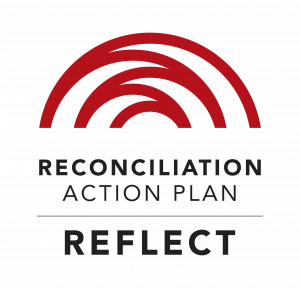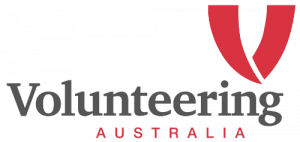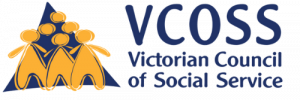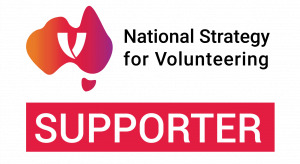2021 was again marked by uncertainty and upheaval. This was largely driven by the ongoing challenges of COVID-19, cycles of lockdown and economic uncertainty. For those of us more intricately involved in the volunteering sector, it has also been a year of change to an important funding stream, the federal Volunteering Management Activity (VMA).
Looking back
Historically, the VMA directly funded 52 providers across 72 locations to support and provide place-based volunteer management services across the country. In February 2021, the Department of Social Services (DSS) announced its intention to reframe the VMA by partnering with the state and territory volunteering peak bodies to deliver the program. From 1 July 2021, the redesigned VMA shifted the focus to online service delivery and the breaking down of barriers to volunteering for three priority cohorts: People with a disability, Newly Arrived Migrants, and First Nations people.
Since July last year, I have led Volunteering Victoria’s efforts to redesign VMA delivery in the state according to the new federal government guidelines. I see this as an exciting opportunity to strengthen services and ensure national consistency in volunteering support. Recognizing that the changes have led to uncertainty in the sector, I believe the redesign, when executed in consultation with community, provides opportunities for us to bolster community infrastructure at a time when it is needed most, and provides a model that will be attractive for future state and federal investment. It is also important to me that we find a way forward with our federal, state and community sector colleagues that is consistent with our values and the needs of those in our sector and our state.
While we are still waiting for the final sign-off of our intended model for the VMA in Victoria, my new role has led me to reflect on the nature of social service delivery, the infrastructure that supports it and the role Volunteering Victoria and other organisations can play.
Learning from past experiences
When I applied for my first role with Volunteering Victoria in 2017, I was excited by the potential impact a volunteering peak body could have. I was eager to take on the challenge of working across the multiple sectors volunteering underpins. I felt this role was well suited to a peak body, and it would be hard for government to take on the breadth of support this role involves.
At the time, I noted strong parallels between some functions that could be carried out by a volunteering peak body, and the Prime Provider model that was central to the HIPPY program (where I previously worked at Brotherhood of St Laurence).
For those who are unfamiliar with the term, a Prime Provider delivers programs on behalf of government. It provides funding, governance, and support in community, in partnership with local organisations.
This model of service delivery enabled the Brotherhood of St Laurence as a Prime Provider to deliver an evidence-based early childhood literacy program in remote Aboriginal communities. The Federal government did not have the necessary ties to do such programs justice in these communities, nor did the Brotherhood of St Laurence, but by partnering with local community organisations we were able to ensure the success of the program even in remote communities.
With HIPPY, the community providers did what they did best: connect with their communities. The Brotherhood of St Laurence meanwhile took care of contract management, program integrity, and theory of change, etc. Resources for the program were produced centrally by the Brotherhood of St Laurence to increase efficiency but remained sufficiently flexible to adapt to local need.
Volunteering Victoria’s independence and our ability to act on behalf of our members is crucial to remaining true to our mission as a peak body. While the redesign of the VMA poses some challenges to this independence, I believe that in adopting the ethos of a Prime Provider model for our VMA services, we can balance the responsibility of being a peak and a provider of services with integrity.
Looking forward
A Prime Provider Is most effective when supported by a robust infrastructure that is connected to local communities.
In recent years, funding community infrastructure has often been overlooked in favour of funding service platforms. This has often led to poor outcomes, particularly for disadvantaged communities. Consider the government’s devolvement of the MySchool website, or the robodebt automated welfare recovery scheme. Human support is essential to translate between large government bureaucratic systems and local organisations or individuals working to improve their local communities. Consider, how much individual pain could be avoided if we invested more in human infrastructure to assist individuals and organisations navigate complex government systems?
In August 2021, Volunteering Victoria contracted LDC group, an independent consulting firm, to undertake a comprehensive consultation and environmental scan to provide us with recommendations of how best to redesign the VMA in line with government guidelines, while recognizing the unique strengths of our state, and the volunteering support sector.
With the ongoing challenges brought by the pandemic, (as well as changes in federal funding) the need for multifaceted community infrastructure has never been more important. As legislation and COVID-19 policy has changed across state and federal governments, there has been a need for quick communication with the community. While Volunteering Victoria can provide and develop this expertise in conjunction with the government, we need partners such as Volunteering Support Services and Volunteer Involving Organisations (small, medium AND large) to get the message out to the community.
Here at Volunteering Victoria, we are growing into our new role as a Prime Provider while ensuring we stay true to our role of Peak, translating state and federal legislation policy and funding systems. We are doing our best to put our values of accountability, collaboration, and innovation at the forefront of our work. We are working to establish a model in Victoria that recognizes the importance of local infrastructure in ensuring positive outcomes for the state. Keep an eye out on the VMA page on our website for more detail once it is finalised.
As always, if you have any questions, feel free to reach out to us at [email protected].
Sara Sterling
State Programs Manager





